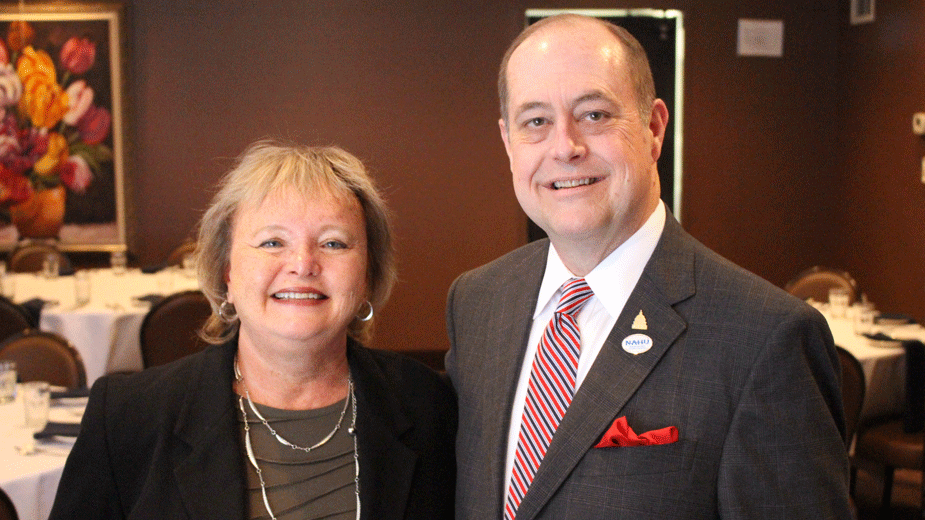Health Underwriters Concerned about Market Stability
YOUNGSTOWN, Ohio – Market instability in the health-insurance industry remains a common concern at both the state and national level.
“Our biggest concern in Ohio is the stabilization of the individual market,” said Carol Conway, president of the Ohio Association of Health Underwriters. “There’s very limited options available for individuals who do not have access to health benefits through employers.”
Conway and National Association of Health Underwriters President Michael Embry updated members of the Western Reserve Chapter on industry changes during a conference Thursday at the Upstairs Restaurant & Lounge.
The most significant change prompting instability in the market, Embry said, is that the penalty for not having individual insurance for the 2019 year has been reduced to zero. This affects both of the health underwriters’ members who are in the individual and employer markets.
“There wasn’t a total repeal of the mandate but it will reduce the penalty to zero,” he said. “For the members that are involved in the individual market, it is a double-edged sword. Because some are feeling that if people don’t have a penalty to pay, they’ll drop out and not buy individual coverage, which could lend itself to even more instability in the individual market.”
At the state level, Conway addressed the need for stabilization of Medicare and insurance rates, “to create an environment in Ohio and nationally where carriers want to participate in a more competitive environment rather than carriers deciding, ‘I cant make any money at this so I’m going to leave,’ ” she said.
Embry highlighted legislative actions from this year that will have profound affects on the health insurance industry.
On Jan. 22, a resolution signed by President Donald Trump delays making any changes to the Affordable Care Act taxes. This delayed the “Cadillac Tax” until January 2022, instituted a one-year moratorium on the Health Insurance Tax, delayed the Medical Device Tax until January 2020 and extended the Children’s Health Insurance Program, or CHIP, for six years.
Among resolutions signed into law Feb. 9 were Medicare changes, cutting the Affordable Care Act’s public health prevention fund by $12.7 billion, extending CHIP funding for four more years through 2027, extending community health center funding for two years and providing $6 billion in opioid response funding for over two years.
One of the biggest changes the health underwriters are advocating is repealing the so-called Cadillac Tax, which will impose a 40% tax on health plans that exceed certain cost thresholds beginning in 2022, following the delays passed in December 2015 and January 2018.
“We want to repeal the Cadillac Tax because a lot of people could be dramatically affected if they have to be taxed on the benefits they’re being offered by their employer,” Conway said.
Underwriters also advocate the repeal of the Health Insurance Tax, which will add more than $500 annually in costs to a typical family policy, Embry reported.
This year, the National Association of Health Underwriters is advocating streamlining the employer reporting process to establish a new voluntary reporting system, reduce the number of individuals and amount of information that would need to be reported, and eliminate the requirement to collect dependent social security numbers.
“Anything that would remove the time consuming regulations to employers,” Embry explained.
Members of the local underwriters’ association “absolutely” have an impact, said Conway, by keeping in touch with legislators through annual meetings with the state association in Columbus and the national association in Washington D.C.
“We’re campaigning for ourselves but also speaking on behalf of our employers because they’re being dramatically affected by all of these changes,” Conway said. “When health insurance costs increase, that increases the bottom line for all the employers out there.”
Pictured: Ohio Association of Health Underwriters President Carol Conway and National Association of Health Underwriters President Michael Embry.
Copyright 2024 The Business Journal, Youngstown, Ohio.



